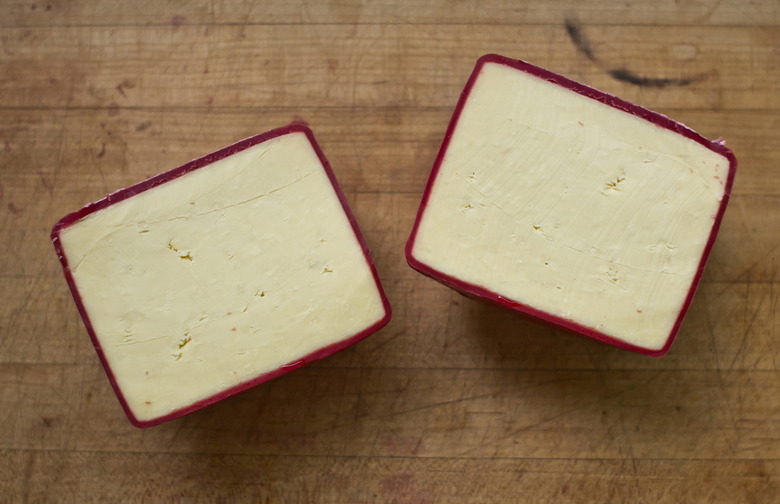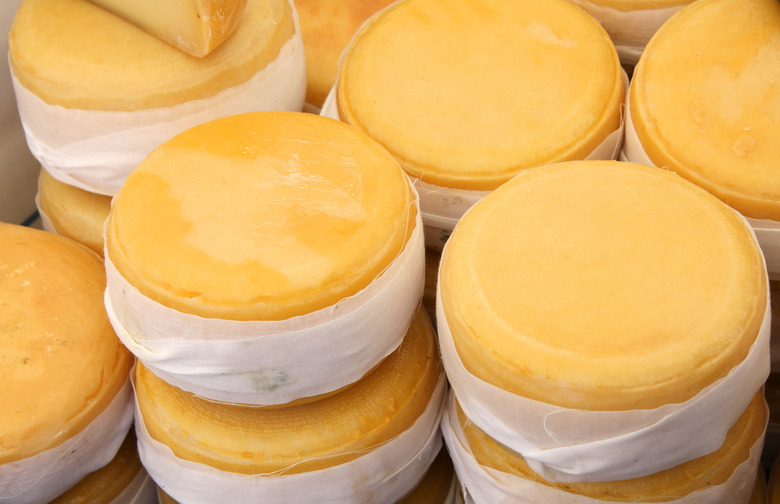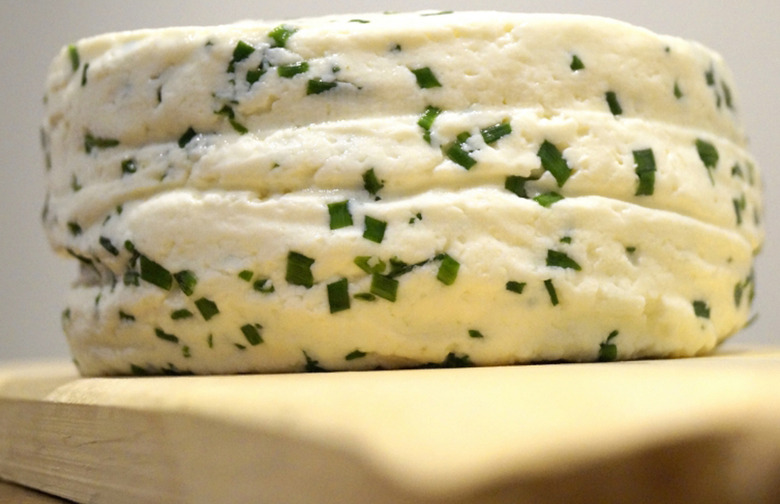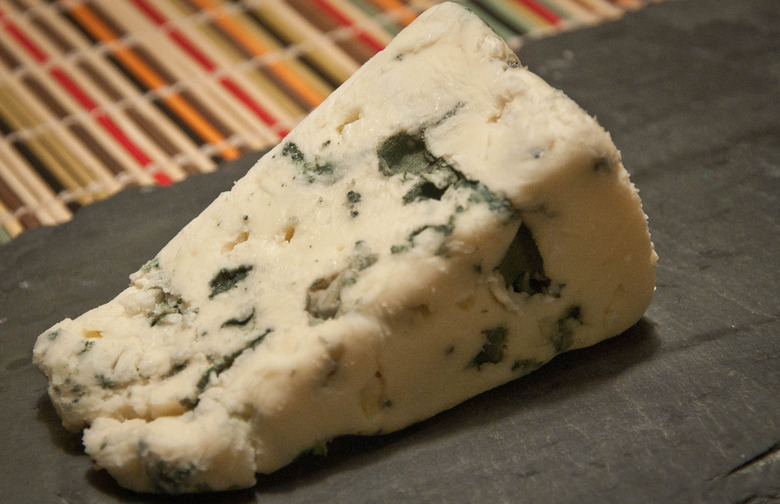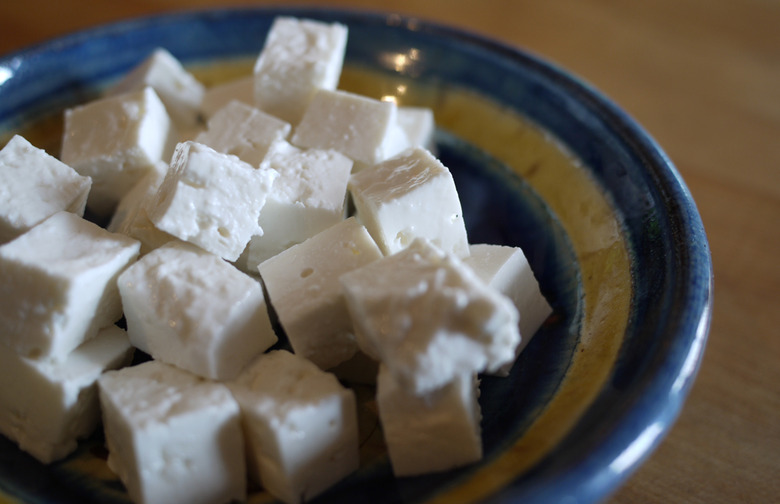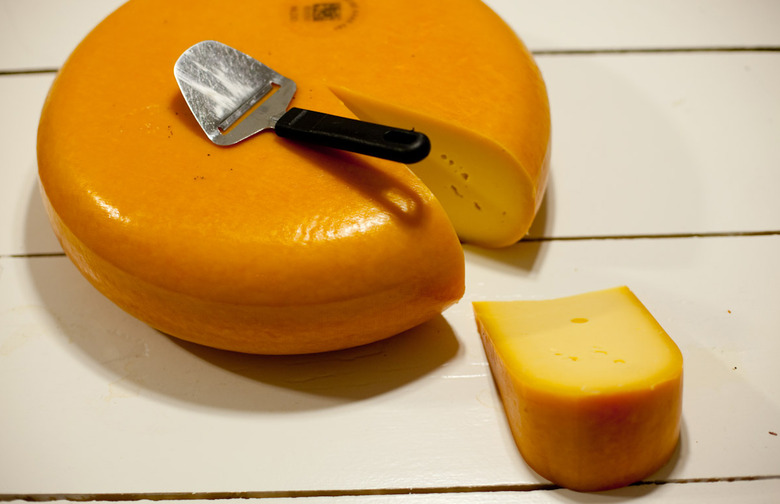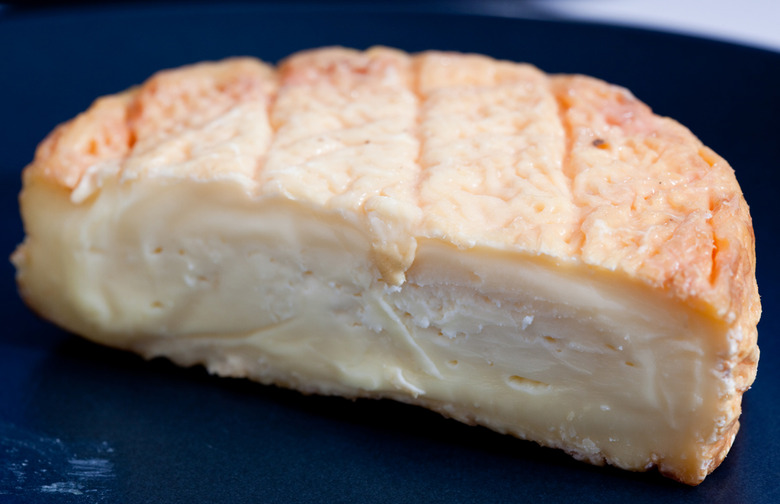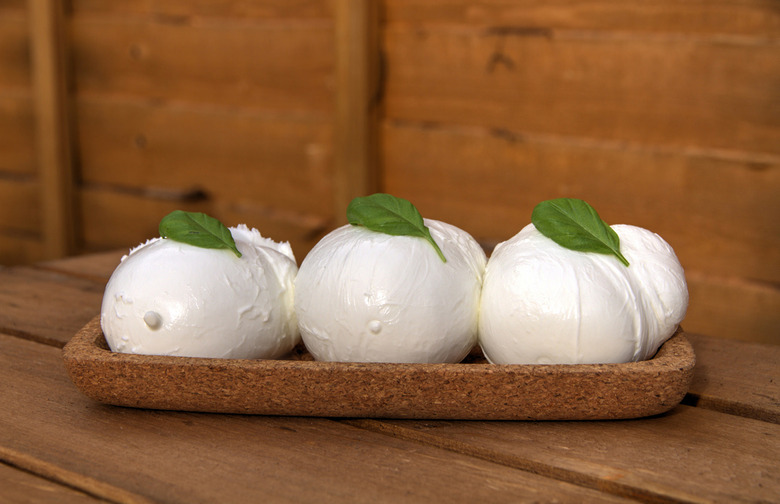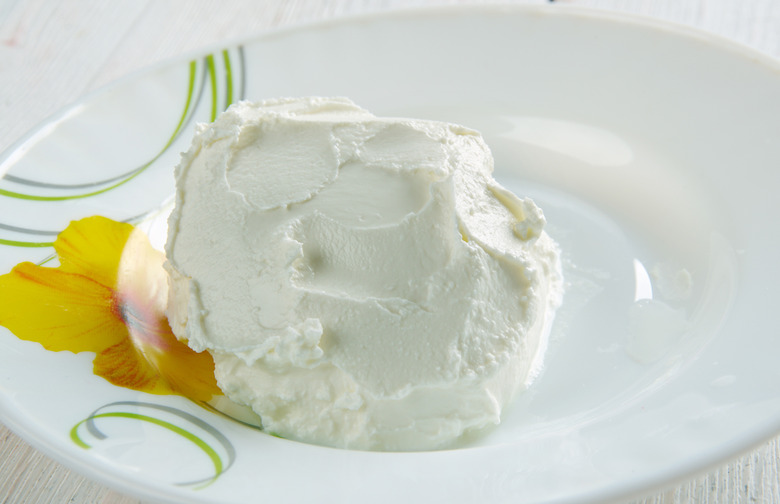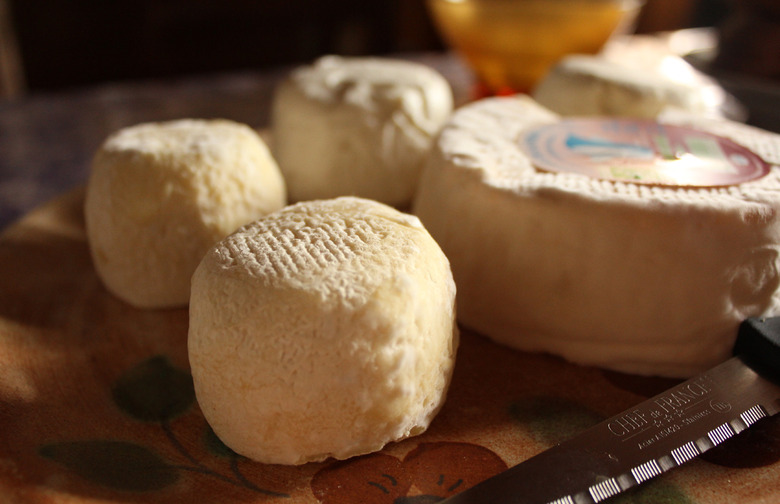11 Best Cheeses From Around The World Slideshow
Set in South Wales, the heart and soul of Welsh culture, the ancient town of Caerffili is a picturesque setting with its medieval castle and pure green pastures dotted with dairy cows. This is the historic birthplace of Caerphilly, one of Wales' oldest and most celebrated cow's milk cheeses. However, experts agree the best Caerffili (or Caerphilly) in Wales is actually produced by Caws Cenarth Cheese in Glyneithnog, in the lush Cych River valley. Caws Cenarth is a family-owned cheese producer whose artisanal, raw milk Caerffili relies on a recipe that goes back six generations. When young, Caerffili is white, fresh, and creamy with a slightly salty crumbly curd with hints of lemon. As it ages, sometimes for up to a year, the cheese slowly develops a hard outer rind and firm heart with more pronounced earthy flavors. Nutritious and packed with essential minerals, Caerffili cheese was once a favorite of Welsh miners that took it down into the mines with bread for an easy meal on the go.
Cheddar
Favored around the world for its firm texture, nutty flavor, and tangy bite, Cheddar is both the name of the cheese and the process that produces this ancient, flavorful cheese. It all started back in the twelfth century in the town of Cheddar, located in the county of Somerset in South West England. Aged and stored in caves because their optimal conditions provide constant temperatures and humidity levels, cheddaring is a time-consuming process done by hand that includes turning slabs of curd and piling them on top of each other in a controlled way to help drain the whey. Each turn stretches the curd and helps the cheese develop its tell-tale firm texture. A favorite of English kings for centuries, Cheddars from 14 cheese makers in the West Country in England are licensed to use the EU PDO "West Country Farmhouse Cheddar." To do so requires meeting the following criteria: The cheese must be made with locally sourced milk and produced on a farm in the four counties of Devon, Cornwall, Dorset, and Somerset; it must be made by hand using traditional Cheddar-making techniques; it must be aged in West Country; and it can only be sold at a minimum age of nine months. For the best, just remember: The older it gets, the harder, more pungent, and sharper it gets.
Queijo da Serra da Estrela
Although Portugal's cheese might not have the fame of those in France and Italy, the country has 15 DOP cheeses, and at the top of the list is Queijo de Serra da Estrela, which has been produced in the Serra da Estrela region near Portugal's highest mountain since before the sixteenth century. This traditional sheep's milk cheese's production methods haven't changed in centuries and are made by hand between November and May using milk from the ancient Bordaleira breed of sheep. Cured with blossoms from the cardoons that grow wild all over the mountainsides, this cheese is tangy, soft, and creamy like Brie when young, and as it ages it becomes more pungent and oozy in the center. Only 10 villages may make this cheese and each one must follow strict regulations about the milk used, as well as production and aging methods.
Queso Fresco
Despite what you may have read on a Mexican restaurant menu or in a recipe book, queso blanco is not a traditional Mexican cheese — it just means "white cheese," and refers to a variety used in Mexican cuisine. However, queso fresco, which means "fresh cheese," is an authentic Mexican cheese made with cow's milk or sometimes a combination of cow and goat's milk. It is one of the best cheeses to cook with, even if you aren't making frijoles or enchiladas. In Mexico, queso fresco is invaluable because when heated it becomes soft and creamy but doesn't melt or become stringy. It's perfect for stuffing in chile rellenos and baking with most any casserole dish and its shelf life varies by producer. If it's an artisan cheese produced by hand by a small producer, it will be wrapped in banana leaves, sold in a farmer's market, and spoil after five days. Commercially-produced queso fresco, however, is pasteurized, is shelf-stable for 90 days, and is now available at regular grocery stores.
Roquefort
Behind every great cheese there is always a great story (or dubious myth) and Roquefort, one of France's greatest cheeses, has its own tale. It involves a shepherd who abandoned his sheep at the foot of Massif de Combalou to follow a fair maiden, placed his bread and sheep's cheese in a cave, and returned months later to find his lunch covered with blue mold. Desperately hungry, the shepherd ignored the mold, devoured the bread and cheese, and — voilà — was delighted with the taste of Penicillium roqueforti. While this may or may not be true, Roquefort's renowned quality is real. Pliny the Elder even wrote about it in Chapter XI of his Natural History, and it's the benchmark for all other blue cheese. Made exclusively from the milk of Lacaune sheep and aged naturally in limestone caves in the heart of the Combalou Mountain, Roquefort was the first cheese to achieve AOC status. A PDO-registered cheese, it may only be called Roquefort if produced under strict guidelines in the tiny village of Roquefort-sur-Soulzon in the Aveyron region of France. White and studded with large spots of deep blue mold, Roquefort is complex, mildly tangy, slightly salty, creamy, and has intricate flavors, but should never have an aggressive, moldy flavor.
Feta
According to Greek mythology, the gods sent Aristaios, son of Apollo, down from Olympus to teach the Greeks how to make cheese, grow olives, and tend bees — and the Greeks have happily been making fabulous cheeses like feta ever since. While most Americans are familiar with American feta made from cow's milk, there is no substitute for the real thing. The rich, fattier creaminess of real feta is unlike the stuff made here that's bland and salty and used in "Greek salad." This ancient cheese goes back thousands of years and is now a PDO-registered cheese made with approximately 70 percent sheep's milk and 30 percent goat's milk. According to PDO regulations, feta can only be called feta if it's produced in the central part of Greece, or in Lesvos, Macedonia, Thrace, Thessaly, or the Peloponnese. To make feta, the whey is drained from the curds, which are then formed into blocks, sliced, salted, and placed in brine in wooden barrels for aging up to three months. Try it sliced with bread, melted, crumbled over orzo, or in a salad, and you will see why it's been around for thousands of years.
Gouda
Like feta, you have to taste the real thing to appreciate just how tasty authentic Gouda from the Netherlands is and how easily it can be served with beer, wine, fruit, and nuts, or shredded and melted into an omelet or juicy burger. For centuries, Gouda has been made in the town of Gouda, and it comes in a range of styles based on aging. Young Gouda comes in a red wax rind, is only aged up to three months, and is sweet, creamy, and mildly flavored. As is it cured from four to nine months, it becomes firmer and develops a mild, nutty flavor and a bit of zesty sharpness. Cheese connoisseurs often prefer aged Gouda's texture and flavors because the firmness and earthy mushroom notes are more complex and aromatic and the sharp tang resembles those found in Cheddar. For a fine cheese at the end of a meal to serve with a 10-year Tawny Porto, extra-aged Gouda is the thing to serve. It is aged 18 months or more and has a biting sharpness that's softened by the Porto. It has a long finish with a bit of sweetness similar to caramel or butterscotch.
Époisses
A king of cheese, Époisses, is named for the small village in the Côte d'Or in Burgundy where it originated in the Middle Ages. This glorious, stinky cheese has an edible, cantaloupe-colored rind that is first brined and then cured and washed with marc de Bourgogne (the French equivalent of grappa). When young, its aromas are not as pronounced, the texture is firm, and the cheese is easy to eat while drinking a lovely red Burgundy. As it ages, it become oozy and almost runny, and the smell is so intense it is banned on public transportation in France. However, with age, this stink is part of a palate of creamy, rich, earthy, nutty flavors that are excellent with a white Burgundy, and need no accompaniment other than a crisp baguette and a companion who can properly appreciate the cheese's aromatic power.
Mozzarella di Bufala
For velvety texture, smooth creaminess, and rich fatty flavor, only Mozzarella di Bufala will do. This DOP cheese deserves its coveted status, but like with other DOP products from Italy, counterfeits are abundant and don't do justice to the original. Made using the milk of water buffalos from the Campania region, mozzarella has been produced since the Middle Ages. Theories abound about how the water buffalo first came to Italy, but they are perfectly suited to graze in the swamps and tall grasses typical in Campania, and the higher fat content of the milk makes it far superior to cow's milk. In Italy, Mozzarella di Bufala is made fresh by kneading warm, cheese curds into smooth balls that are then placed in brined water and only keep for about five to seven days. Unlike the cow's milk versions, this cheese is tender and velvety when it melts, and while it can be stringy, the tendrils are delicate rather than being rubbery. Its delicate, milky flavors and tender texture are why it's just as popular in salads as it is melted on top of pizza.
Nabulsi
This semi-hard cheese was chosen not just because it tastes good on its own, but because it is used to make wonderful desserts in Turkey, Greece, Israel, and Arabic nations in the Middle East, especially in those that use shredded filo dough, as in kanafeh or kataifi, depending on the country. This semi-hard cheese is wonderful baked in layers with kataifi dough, walnuts or pistachios, and rose water, and drizzled with honey. It's made with either sheep or goat's milk that has been brined, similar to feta, and is also served with salads, freshly baked pita bread, pickled vegetables, and as an accompaniment to other appetizers.
Crottin de Chavignol
Few fresh cheeses are as delightful to eat or use in dishes both hot and cold as a delicately-scented, creamy young goat cheese. For this, we went to the Loire Valley in France, arguably the single best place to find superior quality goat cheese, and chose Crottin de Chavignol. The cuisine of the Loire is not as distinct as the wine and cheese, but this is France's larder, where fruit, vegetables, and French culture flower. Produced in the village of Chavignol, not far from the wine town of Sancerre, this cheese has been produced since the sixteenth century and begins as a small white circle and at around eight days old gains a nutty flavor. As it ages, the cheese starts to shrink and develop a wrinkly texture that starts to turn a pale yellow as the cheese becomes tangier, more herbaceous, and more pungent. Additional aging leads to mold on the outer rind and deeper, more pronounced goat smells and hints of mushrooms. After four months it will shrink almost in half, is harder, and has pungent, earthy, smells akin to those of an aged brie. In all its stages it is perfect served at room temperature, cooked in hearty dishes, or baked in soufflés with a great white wine from nearby on the side.

